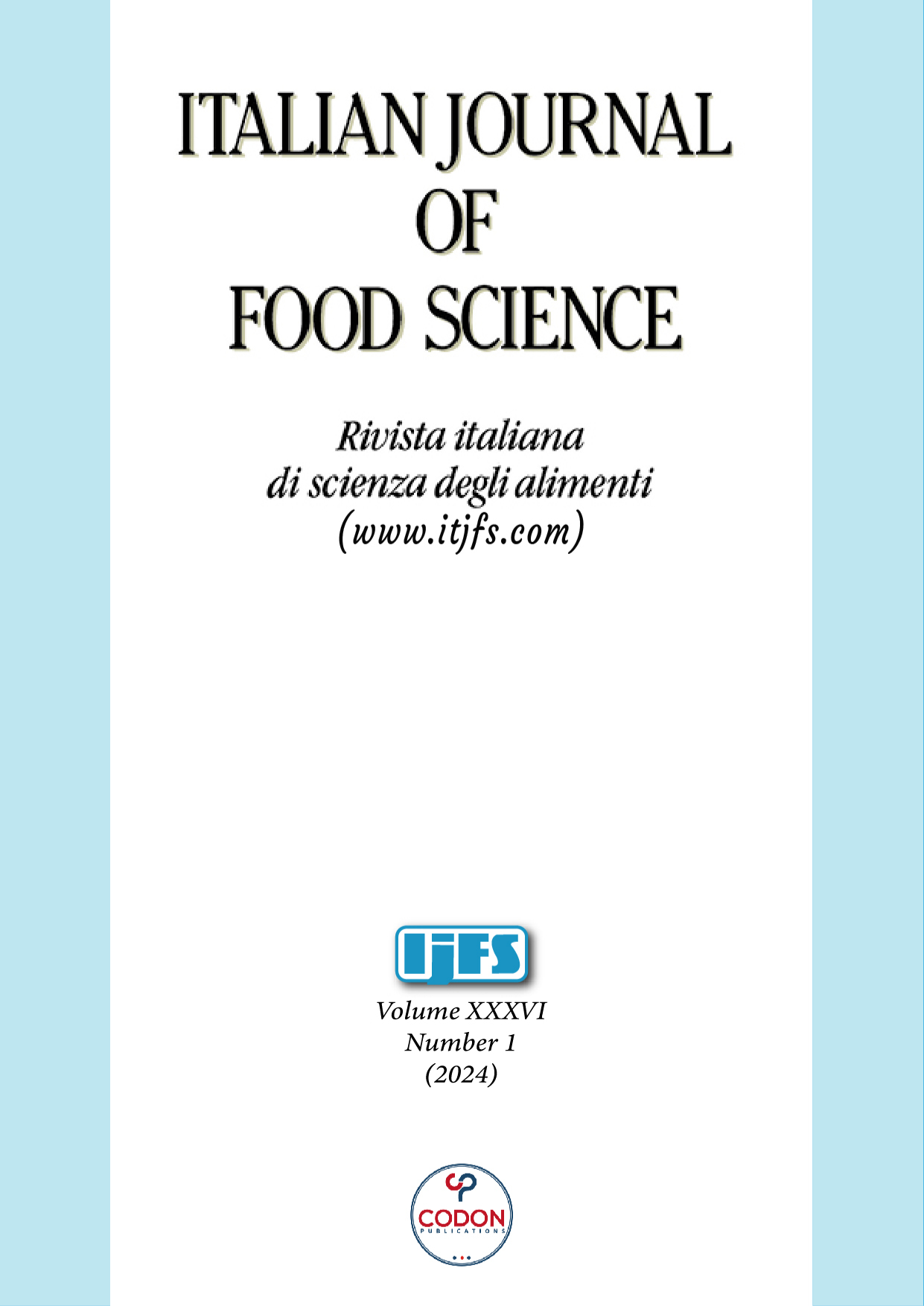QUALITÀ ORGANOLETTICA DEI GAMBERI MARRONI (CRANGON CRANGON L.) CONSERVATI IN DIVERSE CONDIZIONI DI CONGELAMENTO PRIMA DELLA COTTURA
##plugins.themes.bootstrap3.article.main##
Keywords
Abstract
I gamberi sono soggetti a una rapida degradazione dopo la morte. Il congelamento dei gamberi crudi poco dopo la cattura aiuta a mantenere la qualità del prodotto fino alla successiva lavorazione. I gamberi sono stati congelati in tre condizioni (congelati singolarmente, sottovuoto o glassati), direttamente a -20°C o inizialmente surgelati a -50°C e conservati a -20°C. Un panel sensoriale ha valutato la qualità organolettica dei gamberi marroni cotti dopo due e quattro mesi di conservazione a crudo. I gamberi congelati singolarmente sono rimasti più vicini al riferimento in termini di colore e odore, mentre quelli confezionati sottovuoto hanno ottenuto un punteggio inferiore. I gamberi glassati hanno mostrato un visibile deterioramento. La conservazione surgelata dei gamberi crudi si è dimostrata accettabile per brevi periodi, anche se con alcuni cambiamenti percepibili nelle proprietà organolettiche dopo la cottura.
Riferimenti bibliografici
Bhobe A, Pai JS,. Study of the properties of frozen shrimps. J Food Sci Technol. 1986;23;143–7.
Bondoc I. The veterinary sanitary control of fish and fisheries products. In: Control of products and food of animal origin (Controlul produselor și alimentelor de origine animală - Original Title). Vol. I. “Ion Ionescu de la Brad.” Iași Publishing; 2014. pp. 264–346.
Bono G, Badalucco CV, Cusumano S, Palmegiano GB. Toward shrimp without chemical additives: A combined freezing-MAP approach. Food Sci Technol. 2012:46(1):274–9. 10.1016/j.lwt.2011.09.020
Broekaert K, Heyndrickx M, Herman L, Devlieghere D, Vlaemynck G. Molecular identification of the microbiota of peeled and unpeeled brown shrimp (Crangon crangon) during storage on ice and at 7.5°C. Food Microbiol. 2013;36(2):123–34. 10.1016/j.fm.2013.04.009
FAO. Fisheries and Aquaculture Department. Species Fact Sheets: Crangon. 2013. http://www.fao.org/fishery/species/3435/en
Haard N. The role of enzymes in determining seafood color, flavor and texture. In: Bremner HA, editor. Woodhead Publishing Ltd.; 2002. 10.1201/9781439823170.ch13
Hale MB, Waters ME. Frozen storage stability of whole and headless freshwater prawns, Macrobrachium rosenbergii. Marine Fisheries Rev. 1981;43(12):18–21.
Hufnagl M. Population dynamics and lifecycle of the brown shrimp Crangon crangon (Caridea, L. 1758). Experimental, biochemical and theoretical aspects. Universitat Hamburg.
ICES. Report of the working group on Crangon fisheries and life history (WGCRAN). 2011.
Kim J, Marshall MR, Wei CI. Polyphenoloxidase. In Haard NF, Simpson BK, editors. Seafood enzymes: Utilization and influence on postharvest seafood quality. CRC Press. 2000. pp. 271–315.
Londahl G. Technological aspects of freezing and glazing shrimp. Infofish Int. 1997;3:49–56.
Loy-Hendrickx AD, Uyttendaele M, Vermeulen A, Jaxsens L, Devlieghere F. Microbiological guidelines: support for interpretation of microbiological test results of foods. Brugge: die Keure, 2018. pp. 38–40.
Martinez-Alvarez O, Lopez-Caballero ME, Montero P, Gomez-Guillén MC. The effect of different melanosis-inhibiting blends on the quality of frozen deep-water rose shrimp (Parapenaeus longirostris). Food Control. 2020;109:1–9. 10.1016/j.foodcont.2019.106889
Matsumoto JJ. Denaturation of fish muscle protein during frozen storage. In Fennema OR, editor. Protein at low-temperatures. American Chemical Society. 1979. pp. 205–24. 10.1021/ba-1979-0180.ch010
Sikorski ZE, Kolakowska A. Freezing of marine food. In: Sikorski ZE, editor. Seafood: resources, nutritional, composition and preservation. CRC Press. 1990. pp. 112–24.
Silva JL, Handrumrongkul C. Storage stability and some costs of cryogenically frozen, whole freshwater prawns. Mississippi Agricultural and Forestry Experiment Station Bulletin. 1998;1073:1–5.
Sriket P, Benjakul S, Visessanguan W, Kijroongrojana K. Comparative studies on the effect of the freeze-thawing process on the physicochemical properties and microstructures of black tiger shrimp (Penaeus monodon) and white shrimp (Penaeus vannamei) muscle. Food Chem. 2007;104(1):113–21. 10.1016/j.foodchem.2006.11.004
Srinivasan S, Xiong YL, Blanchard SP, Tidwell JH. Effects of freezing and thawing methods and storage time on physicochemical properties of freshwater prawns (Macrobrachium rosenbergii). J Aquatic Food Product Technol. 1998;7(2):47–68. 10.1300/J030v07n02_05
Verhaeghe T, Vlaemynck G, De Block J, Van Weyenberg S, Hendrickx M. Thermal inactivation kinetics of proteases and polyphenoloxidase in brown shrimp (Crangon crangon). Food Chem, 2016;197(Pt A):641–47. 10.1016/j.foodchem.2015.11.024
Vermeersch XHC, Chiers K, Decostere A, Van Weyenbergh S, Vlaemynck G. Evaluation of the effects of onboard sorting and experimental holding practices on the post-catch survival of brown shrimp (Crangon crangon L.). Marine Biol Res. 2018;14:717–27. 10.1080/17451000.2018.1497183
Xiong YL. Protein denaturation and functionality losses. In: Erickson M, Hung YC, editors. Quality in frozen food Chapman Hall/International Thomson Publishing. 1997. pp. 111–40. 10.1007/978-1-4615-5975-7_8



